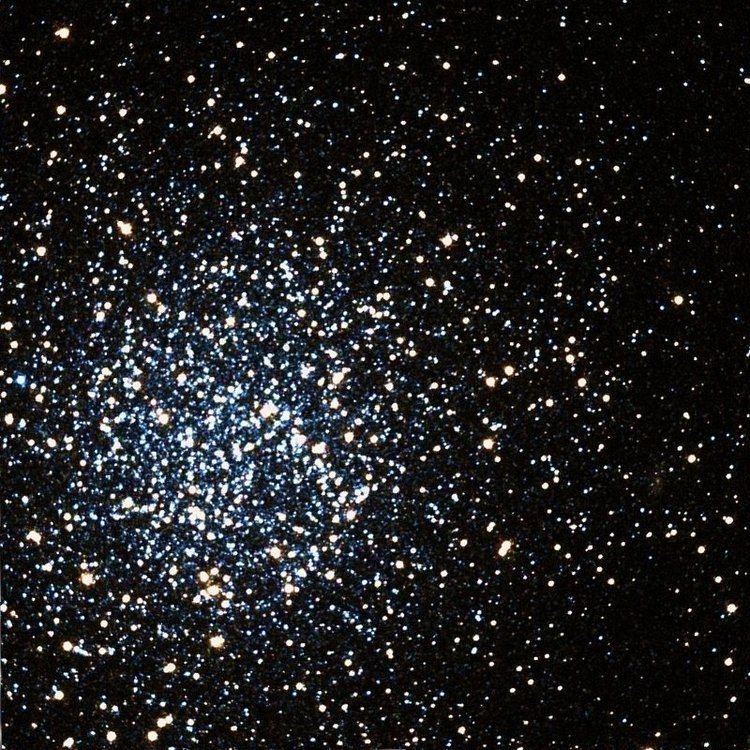Class VII Right ascension 07 38 08.51 Apparent magnitude (V) +9.06 | Declination +38° 52′ 54.9″ | |
 | ||
NGC 2419 (also known as Caldwell 25) is a globular cluster in the constellation Lynx. It was discovered by William Herschel on December 31, 1788. NGC 2419 is at a distance of about 300,000 light years from the solar system and at the same distance from the galactic center.
NGC 2419 bears the nickname "the Intergalactic Wanderer," which was bestowed when it was erroneously thought not to be in orbit around the Milky Way. Its orbit brings it further away from the galactic center than the Magellanic Clouds, but it can (with qualifications) be considered as an element of the Milky Way. At this great distance it takes three billion years to make one trip around the galaxy.
The cluster is dim in comparison to more famous globular clusters such as M13. Nonetheless, NGC 2419 is a 9th magnitude object and is readily viewed, in good sky conditions, with good quality telescopes as small as 102mm (four inches) in aperture. Intrinsically it is one of the brightest and most massive globular clusters of our galaxy, having an absolute magnitude of -9.42 and being 900,000 times more massive than our Sun.
It was proposed too NGC 2419 could be, as Omega Centauri, the remnant of a dwarf spheroidal galaxy disrupted and accreted by the Milky Way. However, later research seems to disprove that possibility.
Astronomer Leos Ondra has noted that NGC 2419 would be the "best and brightest" for any observers in the Andromeda Galaxy, looking for globular clusters in our galaxy since it lies outside the obscuring density of the main disk. This is analogous to the way the cluster G1 can be seen orbiting outside of the Andromeda Galaxy from Earth.
